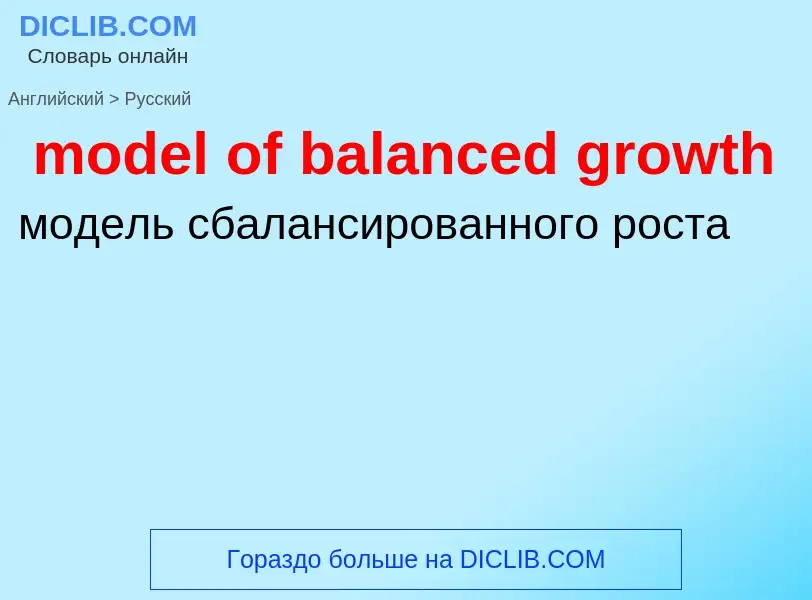Перевод и анализ слов искусственным интеллектом ChatGPT
На этой странице Вы можете получить подробный анализ слова или словосочетания, произведенный с помощью лучшей на сегодняшний день технологии искусственного интеллекта:
- как употребляется слово
- частота употребления
- используется оно чаще в устной или письменной речи
- варианты перевода слова
- примеры употребления (несколько фраз с переводом)
- этимология
model of balanced growth - перевод на русский
экономика
траектория сбалансированного роста
общая лексика
сбалансированный рост
[grəuθ]
общая лексика
рост
развитие
произрастание
выращивание
культивирование
растительность
поросль
новообразование
возрастание
вырост
выростковый
нарастание
нарост
обрастание
порядок роста
прирост
разрастание
разращение
ростовой
увеличение
медицина
рост (процесс)
строительное дело
наращивание
растительный покров
существительное
общая лексика
рост
развитие
прирост
увеличение
усиление
распространение
выращивание
культивирование
произрастание
культура (бактерий)
плод
продукт
предмет выращивания
растительность
поросль
щетина
урожай
рост, развитие
прирост, увеличение
выращивание, культивирование
медицина
опухоль
новообразование
новообразование, опухоль
бактериология
культура
синоним
2) выращивание
3) происхождение
- growth by merger
- growth in the living standard
- of domestic growth
- of foreign growth
- of other growth
- growth of technology
- abnormal growth
- balanced growth
- closed population growth
- damped growth
- economic growth
- efficient growth
- equilibrium growth
- exponential growth
- export-biased growth
- import-biased growth
- intercensal growth
- internal growth of company
- job growth
- logistic population growth
- monetary growth
- money growth
- natural population growth
- open population growth
- population growth
- secular growth
- stable growth
- stunted growth
- sustainable growth
- sustained growth
- unbalanced growth
- zero growth
Определение
.
Википедия
The Ramsey–Cass–Koopmans model, or Ramsey growth model, is a neoclassical model of economic growth based primarily on the work of Frank P. Ramsey, with significant extensions by David Cass and Tjalling Koopmans. The Ramsey–Cass–Koopmans model differs from the Solow–Swan model in that the choice of consumption is explicitly microfounded at a point in time and so endogenizes the savings rate. As a result, unlike in the Solow–Swan model, the saving rate may not be constant along the transition to the long run steady state. Another implication of the model is that the outcome is Pareto optimal or Pareto efficient.
Originally Ramsey set out the model as a social planner's problem of maximizing levels of consumption over successive generations. Only later was a model adopted by Cass and Koopmans as a description of a decentralized dynamic economy with a representative agent. The Ramsey–Cass–Koopmans model aims only at explaining long-run economic growth rather than business cycle fluctuations, and does not include any sources of disturbances like market imperfections, heterogeneity among households, or exogenous shocks. Subsequent researchers therefore extended the model, allowing for government-purchases shocks, variations in employment, and other sources of disturbances, which is known as real business cycle theory.

